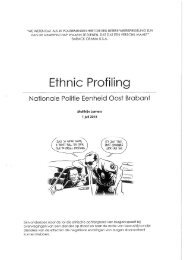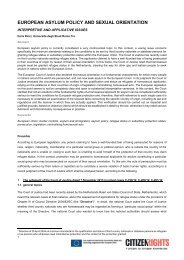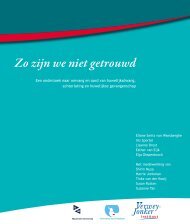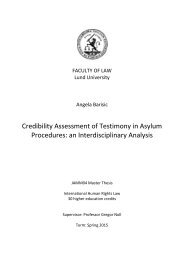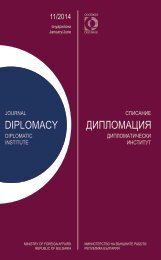AEMI
AEMI-2016-web
AEMI-2016-web
Create successful ePaper yourself
Turn your PDF publications into a flip-book with our unique Google optimized e-Paper software.
izens by quoting the main legal grounds for expulsion such as threat to public policy,<br />
public security and public health, abuse of rights or fraud and unreasonable burden<br />
on the social assistance system of the host Member States. Morawski argues that<br />
economically inactive Union citizens are not protected enough against expulsion,<br />
despite the existing safeguards. Since no conviction is required, the mere suspicion<br />
of a breach of the order is sufficient to constitute a threat to public policy. The recent<br />
refugee crisis and some events surrounding the Brexit, such as the requirements of<br />
the United Kingdom to condition the freedom of movement of mobile workers, is<br />
however, much more worrisome, according to Marowski. Such a step would destroy<br />
the fundamental right of freedom of movement of Union citizens that has existed<br />
since the foundation of the EEC for mobile workers.<br />
In her article From Migrations to New Mobilities in the European Union: Italians<br />
in Berlin Between Anomie and Multi-situated Identity, Daniele Valisena argues that<br />
Italian newcomers in Berlin are representatives of a new phenomenon called new<br />
mobility originating from the 2008 economic crisis. The crisis revealed not only the<br />
economic contradictions and disparities between North and South Europe, but also<br />
cut the bond that tied a generation of young, highly skilled workers and globalized<br />
multicultural people, to their countries, giving them the opportunity to leave and<br />
to enter in a brand new pattern of life that, for its specificities can not be identified<br />
as a traditional migration flow.<br />
Valisena claims that in regards to migration history, neither push and pull, nor political<br />
and economic paradigms can explain this new migration wave. In the same<br />
way, chain migration, melting pot or diasporic models, as well as ethnic analysis do<br />
not seem to be able to totally comprehend this new phenomenon.<br />
Broken Dreams of a Dream Country:Italy Between Wishes and Disenchantment<br />
The Italian community in the Belgian territory, count 157,400 (2013) people of<br />
a total Belgian population of 11. 2million. In her article, Federica Moretti first<br />
describes the experiences of Italian graduate students currently pursuing Master or<br />
PhD programmes at the University of Leuven, Belgium and those of the second/<br />
third generation students enrolled at the University of Leuven. The research unfolds<br />
and compares the two groups’ conceptions of Italy, especially focusing on two<br />
issues: how is Italy ‘imagined’ and how do these imaginaries open up to various<br />
courses of action.<br />
Susana Cascao´s article Portuguese Language Media in Luxembourg: The Newspaper<br />
Contacto, a Step towards Integration is based on her Master´s thesis studying the Portuguese<br />
language newspaper Contacto, a weekly periodical founded during the first<br />
and biggest wave of Portuguese migration to Luxembourg in the 1970’s,.<br />
Contacto has been serving the community in a facilitating role that Susana argues<br />
represents a step towards a desired integration through the interaction with local<br />
organisations and through open support for more political involvement of the Por-




